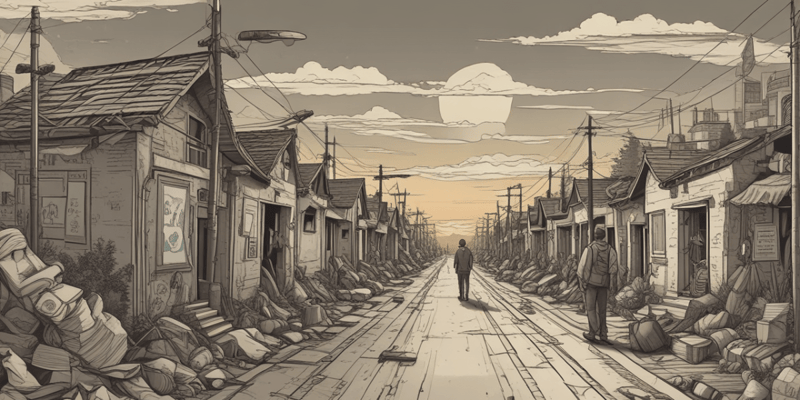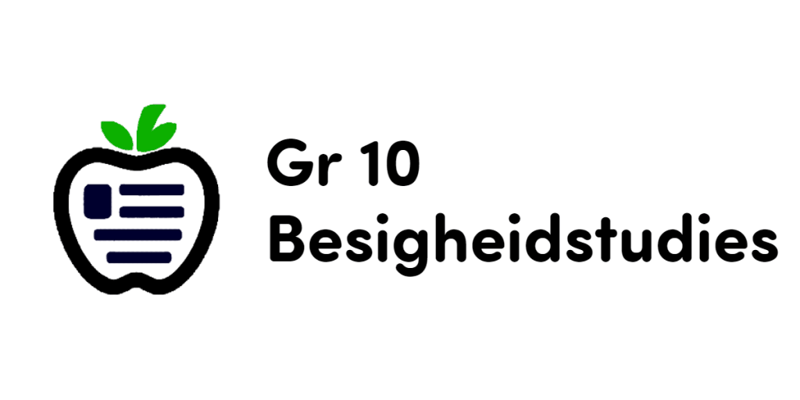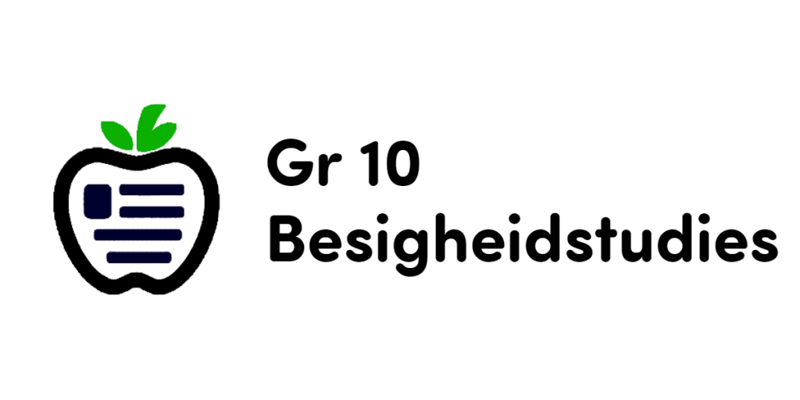76 Questions
What is one of the ways to combat inequality and injustice, according to this module?
Developing education and skills
Which of the following is a specific challenge discussed in this module?
Urban and rural challenges
What is the ultimate goal of creating sustainable jobs, as discussed in this module?
To reduce poverty and inequality
What is the format of the learning material for this module?
A combination of video and text-based content
What occurs when some people have more money, power, or resources than others?
Inequality
What was introduced by the South African government in 1948?
Apartheid policy
What is the main reason for socio-economic imbalance?
Government policies
What is the relationship between socio-economic imbalance and inequality?
Socio-economic imbalance is a type of inequality
What is the goal of creating sustainable jobs in the context of inequality and poverty?
To reduce inequality
What type of challenges are discussed in the context of inequality and poverty?
Rural and urban challenges
What is a major consequence of unemployment?
Social imbalance and potential crime
What is the cycle of poverty?
When parents are unemployed and their children struggle to change their circumstances
What is a significant challenge faced by poor people in accessing education?
Payment of school fees and transport costs
What is a result of HIV and AIDS in South Africa?
Children being left in poverty when their parents or guardians die
What is a characteristic of schools in impoverished areas?
A high learner-teacher ratio and lack of resources
What is poverty often characterized by?
The struggle to survive and lack of basic services
What is a direct consequence of socio-economic imbalance?
Inequality and poverty
What divided South African people into groups according to race?
Apartheid policy
What is a significant difference between Picture A and Picture B?
Socio-economic conditions
What is the main difference between socio-economic imbalance and inequality?
One leads to the other
What is the purpose of creating sustainable jobs?
To reduce poverty
What is a key factor in understanding the concept of inequality?
Distribution of resources
What is a major consequence of socio-economic inequality in South Africa?
A widening gap between the rich and the poor
What is the main reason why poor people struggle to access education?
Inability to pay for school fees and transport costs
What is the result of unemployment on the economy?
A social imbalance because unemployed people have no money to participate
What is the main challenge faced by schools in impoverished areas?
Inadequate facilities and resources
What is the effect of HIV and AIDS on families in South Africa?
It leads to an increase in the number of people living in poverty
What is the main goal of the Black Economic Empowerment (BEE) policy?
To promote ownership of businesses or shares in businesses by non-whites
What is the main consequence of poverty on individuals?
They struggle to survive and often have to face challenges where they cannot pay for basic needs
What is the main characteristic of the socio-economic inequality in South Africa?
A significant gap between the rich and the poor
What is the main challenge faced by the unemployed in South Africa?
They have no money to participate in the economy
What is the main goal of the Skills Development Act of 1998?
To provide education and training in the workplace
What is the main reason behind socio-economic imbalance in South Africa?
Apartheid policy introduced in 1948
What is a consequence of socio-economic inequality in South Africa?
Poverty and unemployment
What is the main difference between socio-economic imbalance and inequality?
Socio-economic imbalance lacks equal opportunities, while inequality lacks equal access to resources
What is the goal of creating sustainable jobs in the context of inequality and poverty?
To reduce poverty
What divided South African people into groups according to race?
The apartheid policy
What is the focus of the module on inequality and poverty?
Causes of socio-economic imbalance
What is one of the government's initiatives to address inequalities in education?
Increasing access to technical schools
What is a challenge faced by schools in impoverished areas?
Poor infrastructure
What is the purpose of the 'drop-everything-and-read' campaign?
To focus on basic literacy and numeracy at primary level
What is one of the ways to address the lack of mathematical skills?
Addressing the lack of mathematical skills in subjects like math, science and technology
What is the purpose of the school feeding schemes?
To provide food for underprivileged learners
What is one of the initiatives to reduce the number of learners who leave school prematurely?
Increasing access to technical schools
What is a common outcome when parents are unemployed and struggling to survive?
Their children are less likely to change their circumstances
What is a major reason why some people struggle to access basic services like water, sanitation, and electricity?
Poverty
What is the main goal of the Black Economic Empowerment (BEE) policy?
To promote ownership of businesses or shares in businesses
What is a significant consequence of unemployment on the economy?
Social imbalance
What is a major challenge faced by schools in impoverished areas?
All of the above
What is the main goal of the Skills Development Act of 1998?
To encourage education and training in the workplace
What is a significant consequence of HIV and AIDS in South Africa?
Increased poverty rates
What is the main characteristic of the socio-economic inequality in South Africa?
High levels of inequality
What is the main goal of laws and policies that address inequality?
To address inequality and promote economic empowerment
What is the main consequence of poverty on individuals?
Struggling to survive and access basic needs
What is the outcome when a group of people have more money, power, or resources than other groups?
Inequality
What policy divided South African people into groups according to race in 1948?
Apartheid policy
What is the difference between socio-economic imbalance and inequality?
Socio-economic imbalance is when some people have things that others don't have
What is the focus of the module on inequality and poverty?
Causes of socio-economic inequalities
What is the ultimate goal of creating sustainable jobs in the context of inequality and poverty?
To reduce inequality
What is one of the challenges discussed in the context of inequality and poverty?
Urban and rural challenges
What is one of the initiatives to address the lack of mathematical skills in subjects such as mathematics, science and technology?
Increasing the number of technical schools
What is a major consequence of poverty in rural areas?
Lack of access to quality education
What is the purpose of the 'drop-everything-and-read' campaign?
To focus on basic literacy and numeracy at primary level
What is a significant challenge faced by people living in rural areas?
Lack of opportunities for the poor
What is one of the government's initiatives to address inequalities in education?
Improving textbook supplies and delivery
What is a common outcome when people cannot find work in the formal or informal sectors?
Increased poverty
What is a major consequence of unemployment?
Social imbalance and crime
What is a characteristic of schools in impoverished areas?
Lack of adequate facilities and resources
What is the cycle of poverty?
When children cannot get a good education due to unemployed parents
What is a major reason for socio-economic imbalance in South Africa?
Social and economic inequality
What is a consequence of HIV and AIDS in South Africa?
Parent-less children in poverty
What is the main goal of the Skills Development Act of 1998?
To provide education and training in the workplace
What is a result of socio-economic imbalance in South Africa?
17 million people living in poverty
What is poverty often characterized by?
Lack of basic services and financial struggles
What is a goal of creating sustainable jobs?
To enable people to participate in the economy
What is a consequence of socio-economic inequality in South Africa?
One of the highest levels of inequality in the world
Study Notes
Inequality and Poverty Overview
- This module covers the causes of socio-economic inequalities.
- The module specifically focuses on the context of inequality in South Africa.
- Education and skills are seen as essential tools to combat inequality and injustice.
- The module also explores the challenges faced in urban and rural areas.
- Creating sustainable jobs is a key aspect of addressing inequality and poverty.
Inequality and Poverty
- Socio-economic imbalance occurs when some people have more opportunities or access to resources than others, leading to inequality.
- Inequality refers to a situation where a group of people have more money, power, or resources than other groups.
Causes of Socio-Economic Imbalance
- Apartheid policy (1948) divided South Africans into racial groups, determining where people lived, worked, socialized, and accessed education and healthcare, leading to socio-economic imbalance.
- Apartheid policy denied equal opportunities to all, causing socio-economic imbalance.
Poverty
- Poverty is a state of being unable to afford basic needs, including food, water, sanitation, and electricity.
- Poverty also includes the lack of basic services and income, making it difficult to survive.
- The cycle of poverty occurs when parents are unemployed, making it difficult for their children to escape poverty due to lack of education and opportunities.
Unemployment
- Unemployment occurs when people are willing and available to work but cannot find a job.
- Unemployment creates social imbalance, leading to financial problems and increased crime rates.
Education
- Poor people still struggle to afford school fees, transport costs, and other expenses.
- Schools in impoverished areas often lack adequate facilities, resources, and maintenance.
HIV and AIDS
- South Africa has the second-highest rate of AIDS sufferers in the world (around 18%).
- When parents or guardians die from AIDS, it leaves dependents in poverty.
Inequality and Poverty Overview
- Socio-economic inequality refers to a situation where some people have more money, power, or resources than others, leading to unequal opportunities and access to economic and social opportunities.
- Poverty is a state of struggling to survive, often lacking basic needs, and facing ongoing financial problems.
Causes of Socio-economic Imbalance
- Apartheid policy (1948) in South Africa divided people into groups based on race, limiting opportunities and creating socio-economic imbalance.
- Unemployment leads to a social imbalance, as people without jobs cannot participate in the economy, often leading to crime.
- Limited access to quality education, especially for poor people, due to high costs, inadequate facilities, and resources.
Poverty and its Effects
- Poverty is a cycle, where unemployed parents struggle to survive, making it difficult for their children to change their circumstances.
- Lack of basic services, such as water, sanitation, and electricity, exacerbates poverty.
- HIV and AIDS have a significant impact on poverty, as the death of breadwinners leaves dependents in poverty.
Socio-economic Inequality in South Africa
- South Africa has one of the highest levels of inequality in the world.
- In 1994, the poorest 40% of the population earned less than 6% of the country's total income, while the richest 10% earned over 50%.
- 17 million people lived in poverty, and 12 million lacked access to water and sanitation.
Reducing Inequality
- Laws and policies, such as the Fair Employment Act of 1998, Black Economic Empowerment (BEE), and the Skills Development Act of 1998, aim to address inequality.
- Education and skills training can help fight inequality and injustice.
Socio-Economic Inequality and Poverty
- Socio-economic imbalance occurs when some people have access to more opportunities and resources than others, leading to inequality.
- Inequality arises when a group of people have more money, power, or resources than other groups.
Causes of Socio-Economic Imbalance
- Apartheid policy (1948) in South Africa divided people by race, denying equal opportunities and causing socio-economic imbalance.
Poverty
- Poverty is the struggle to survive, facing challenges in paying for basic needs, and lack of access to services like water, sanitation, and electricity.
- The cycle of poverty occurs when parents struggle to survive, making it difficult for their children to change their circumstances.
Unemployment
- Unemployment is the situation where people are willing and available to work but cannot find a job, leading to social imbalance and often resulting in crime.
Education and Skills
- Poor people still struggle to pay for school fees, transport costs, and other education-related expenses.
- Schools in impoverished areas lack adequate facilities, resources, and regular maintenance.
HIV and AIDS
- South Africa has the second-highest rate of AIDS sufferers in the world (around 18%).
- When breadwinners die of AIDS, it leaves dependents in poverty.
Socio-Economic Inequality in South Africa
- South Africa has one of the highest levels of inequality in the world.
- In 1994, the poorest 40% of the population earned less than 6% of the country's total income, while the richest 10% earned more than 50%.
- 17 million people lived in poverty, and 12 million lacked access to reasonable water and sanitation.
Reducing Inequality in South Africa
- Laws and policies addressing inequality include the Fair Employment Act (1998), Black Economic Empowerment (BEE), and the Skills Development Act (1998).
- Skills training and education are essential for addressing inequalities and injustices.
- Government initiatives include reducing the number of learners who leave school prematurely, increasing technical schools, and improving infrastructure in impoverished schools.
Inequality and Poverty
- Socio-economic imbalance occurs when people have unequal opportunities or access to economic and social opportunities, leading to an imbalance.
- Inequality occurs when a group of people have more money, power, or resources than other groups.
Causes of Socio-economic Imbalance
- Apartheid policy (1948) divided people into groups based on race, leading to unequal opportunities and socio-economic imbalance.
Poverty
- Poverty is when people struggle to survive and face challenges in accessing basic needs like water, sanitation, and electricity.
- The cycle of poverty occurs when unemployed parents struggle to provide for their children, who then lack opportunities to improve their circumstances.
Unemployment
- Unemployment leads to social imbalance, as unemployed people have no money to participate in the economy, and often results in crime.
Education and Skills
- Poor people struggle to access quality education due to high learner-teacher ratios, lack of facilities, and resources.
- Education and skills training can help people find employment, start their own businesses, and contribute to the country's economy.
HIV and AIDS
- South Africa has the second-highest rate of AIDS sufferers in the world (around 18%).
- The death of breadwinners due to HIV/AIDS leaves families and dependents in poverty.
Socio-economic Inequality in South Africa
- South Africa has one of the highest levels of inequality in the world.
- In 1994, the poorest 40% of the population earned less than 6% of the country's total income, while the richest 10% earned more than 50% of the country's income.
Reducing Inequality in South Africa
- Laws and policies addressing inequality include the Fair Employment Act (1998), Black Economic Empowerment (2003), and The Skills Development Act (1998).
- Government initiatives to address inequalities and injustices include reducing premature school leaving, increasing technical schools, improving infrastructure, and establishing school feeding schemes.
Urban and Rural Challenges
- Urban areas face challenges such as high unemployment, overpopulation, and pressure on resources.
- Rural areas face poverty, lack of infrastructure, and basic services, leading to migration to urban areas.
Learn about the causes of socio-economic inequalities, inequality in South Africa, and ways to fight inequality and injustice through education and job creation.
Make Your Own Quizzes and Flashcards
Convert your notes into interactive study material.
Get started for free



